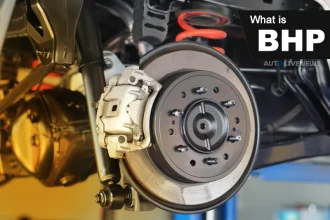Replacing your car’s engine oil from time to time is a crucial part of maintaining its health, but knowing exactly when to change engine oil can be tricky. So, it is normal to feel a bit confused.
In this guide, we’ll break down everything you need to know about how to change engine oil in cars and when you should change it.
Also read: What is the Difference between Diesel and Petrol Engines?
Why Replace Engine Oil?
Car engine oil ensures that every component in your engine operates smoothly. It prevents dirt and sludge from clogging the engine’s passageways and helps cool it down. It also creates a barrier between engine parts, which prevents metal-to-metal brushing and lowers engine noise.
Over time, oil degrades and loses some of its properties. The type of car you drive, your driving habits, and the type of oil you use affect how frequently you need to change engine oil. For example, high-quality synthetic Mobil car oil will need to be changed less often than regular mineral oil.
When you change the oil regularly, you’re protecting your engine from wear, heat, and friction and extending its lifespan.
Signs That Show It’s Time: When To Change Engine Oil
Check for these signs to be aware of when it is time for engine oil replacement:
Manufacturer Recommendations
Refer to the manufacturer’s handbook for recommended engine oil change intervals. These are tailored to the oil type, car engine oil capacity, and the engine design of your car.
Check Engine or Oil Change Light
Monitor the oil change indicator on your car’s dashboard, and change your oil when the “Check Oil” indicator lights up.
Engine Noise and Knocking
If you hear loud engine noise or even rumbling or knocking noises, it may indicate that your engine is running out of oil.
Dark, Dirty Oil
Dirty oil cannot lubricate your engine, so schedule a car oil change when it looks dark.
Oil Smell Inside the Car
Smelling oil inside the vehicle is usually a warning sign of an oil leak. Use a dipstick to check the oil level first, and if there’s no leak, get a mechanic to diagnose the issue.
Exhaust Smoke
If you spot smoke (not translucent fumes) from your vehicle’s exhaust, check for an oil leak and schedule an engine oil service.
Daily Driving
If you drive in high-traffic areas or cover long distances daily, change your oil more frequently than what is recommended.
How To Change Engine Oil? A Step-by-Step Guide
Changing engine oil can be one of the easiest things you can do. Here is a step-by-step guide for you on how to perform an engine oil change.
Step 1: Lift the Vehicle
Place your car on a flat surface and make sure that the engine is cool. Use jack stands, a ramp, or a hoist to lift up the car.
Step 2: Locate the Oil Drain Plug
Locate the oil drain plug and place an oil drain pan below it.
Step 3: Drain the Oil
Using a socket wrench, carefully remove the drain plug to empty the old oil. First, drain all the old oil, then tightly seal the plug back.
Step 4: Replace the Oil Filter
Remove the oil filter gasket first, then use an oil filter wrench to replace the old oil filter.
Step 5: Add Fresh Oil
Lower the car. Use a funnel to carefully pour fresh oil into the oil fill cap.
Step 6: Inspect for Leaks
Check the oil level, inspect the oil filter and drain plug, and ensure that there are no oil leaks.
Tips and Maintenance Recommendations
Paying attention to your engine oil change time will help you avoid engine problems. Here are some tips and maintenance recommendations to increase the longevity of your engine:
- Make a Maintenance Schedule
Create a routine maintenance schedule for regular oil changes, filter checks, and car oil service checks.
- Use High-Quality Oil and Filters
Even if it costs a little more, use higher-quality engine oil and filters.
- Monitor Oil Levels Regularly
Use a dipstick to check your oil level often and add extra oil if you see the oil level dropping.
- Drive Smarter
Accelerate and brake gently; it lowers wear on critical parts, improves fuel efficiency, and lessens engine strain.
- Monitor for Leaks
Check your car’s underside regularly for even small oil leaks.
Conclusion
Regular oil changes are critical to maintaining the health of an engine. Use good-quality oil, check oil levels, and replace car engine oil when required to lengthen your car’s lifespan. The benefits of changing engine oil go way beyond just avoiding costly repairs; you can also enjoy smoother rides and better mileage through proactive maintenance.
Frequently Asked Questions
When to change engine oil in petrol car?
Oil change for petrol cars should ideally be every 5,000 to 10,000 kilometers, according to driving habits and manufacturer guidelines.
When to change engine oil in bike?
The recommended bike engine oil change km is every 4000 km or at least once a year, although the actual frequency depends on the type of oil you use.
After how many kilometers should I service my car?
You should refer to your owner’s handbook and follow the manufacturer-recommended service intervals. Once every 10,000 kilometers or 12 months is generally recommended.
How many kilometers to change engine oil? After how many km oil change for car?
Car engine oil should be changed every 5000-7000 km or every 3-6 months.
How often to change engine oil?
Follow the recommended car oil change km intervals in your owner’s manual. You need to change your oil less often if you use synthetic oil.
In how many kilometers oil should be changed?
You should change your car engine oil every 3 to 6 months, or every 5000 to 7500 km.















